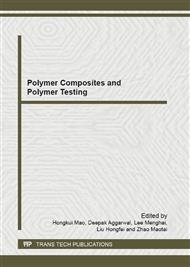p.388
p.395
p.400
p.405
p.409
p.414
p.419
p.423
p.428
An Effective Thermal Flow Meter Based on TDC-GP1 Chip
Abstract:
In this paper, an effective and innovative thermal flow meter is presented. It is based on TDC-GP1 chip and the principle of time difference type ultrasonic flow measurement. Ultrasonic flow meter is applied widely and has some advantages such as non-contact, easily installed and maintained. But it is necessary to make the meter work more stable. The method of time difference can improve the stabilization and measured precision of the ultrasonic flow meter. TDC-GP1 is a chip which can transform time intervals into digital values with high precision. The design of the ultrasonic thermal flow meter is given details in the paper. Results of the experiments show that the innovative meter has low power consumption and high measured precision.
Info:
Periodical:
Pages:
409-413
Citation:
Online since:
April 2012
Authors:
Keywords:
Price:
Сopyright:
© 2012 Trans Tech Publications Ltd. All Rights Reserved
Share:
Citation:


